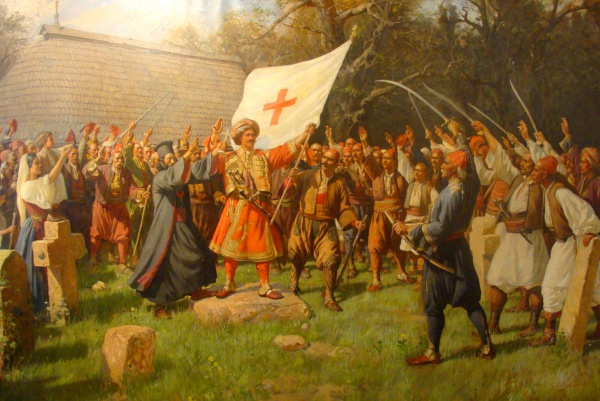Facts About The Takovo Uprising
"The Takovo Uprising" is the title of two almost identical oil paintings by Serbian realist artist Paja Jovanović. These works capture the moment when rebel leader Miloš Obrenović rallied his fellow Serbs to rise against the Ottoman Empire, igniting the Second Serbian Uprising. The first version was created in Paris in 1894 and exhibited in Belgrade the following year. The second version was specially commissioned for King Alexander. Jovanović dedicated significant effort to ensure historical accuracy, meticulously studying details such as costumes and facial features.
In these paintings, Obrenović is depicted as he exhorts the Serbs to revolt at Takovo. He stands before leaders and clan elders, brandishing a revolutionary flag, surrounded by supporters showing their approval. The second version of the painting features some minor alterations, particularly in the expressions and overall tone.
The historical context of the Second Serbian Uprising in 1815, which followed severe repression and massacres by the Ottomans, is vividly brought to life in these paintings. Initially known for his Orientalist works, Jovanović transitioned to historical painting at the behest of King Alexander. The paintings were well-received, with lithographic reproductions becoming popular in schools and seminaries.
Art historian Lilien Filipovitch-Robinson praises Jovanović's depiction of Obrenović as a valiant and inspiring leader. She notes that the painting symbolizes Serbian unity and perseverance, reflecting the political atmosphere of the time. The image of Obrenović in Turkish attire alludes to his past dealings with the Ottomans and underscores the intense patriotism of the Serbs.
"The Takovo Uprising" remains one of Jovanović's most celebrated works, continuing to evoke historical reflection and cultural pride. It is even associated with the Serbian three-finger salute. This painting stands as a powerful symbol of Serbian identity, unity, and the enduring struggle for freedom and nationhood.
